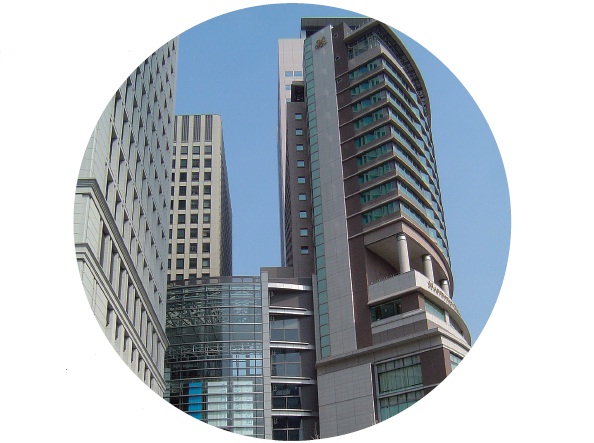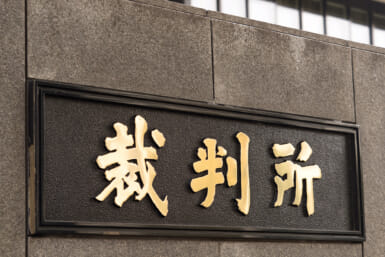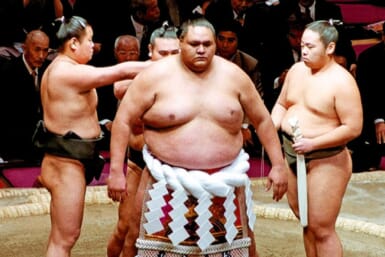The Oazo development is leading Marunouchi’s transformation says Suzy Small
TOKYO is not a city that has traditionally had a good reputation for architecture, especially with office buildings. In the post-war years, the city was filled with concrete office towers that could be built quickly and inexpensively, but with little regard for appearance. Fifty years on, and in a much more affluent society, many of these are now looking decayed, ugly and ripe for redevelopment. Life for those who worked in these concrete towers was not ideal either – the business districts were often sterile, lacking good restaurants and facilities and, on top of long working hours, employees often had a commute of several hours to dormitory suburbs. The situation was far from ideal, in terms of both lifestyle and urban aesthetics.
However, the past decade has seen a slow but steady change. More thought is being given to both the quality of architecture and quality of life for the people inside the buildings. Developers are increasingly prepared to spend money on buildings that will last for a long time, and are planning for long-term development.
Mitsubishi Estates, which
operates 30 buildings in the
area, is part of an ambitious
plan to modernize Marunouchi
Roppongi Hills is a prime example of this new mentality — the development was planned over 14 years, and the attention to detail shows. As well as office space, the 11.6 hectare site includes apartments, designer shops, the Mori Gallery, the Grand Hyatt hotel, Virgin Cinemas and landscaped gardens. Although costly (approximately ¥270 billion), the investment has paid off — from the moment it opened, Roppongi Hills was embraced by Tokyoites as a place to meet, shop and relax, and many appreciated the injection of class it gave the increasingly seedy Roppongi area. Although the office tower is among the largest in Tokyo, the success of the area is down to the atmosphere – rather than corporate, it feels spacious and park-like.
The success of Roppongi Hills is something that the Marunouchi area of the city is hoping to replicate. Mitsubishi Estates, which operates 30 buildings in the area, is part of an ambitious plan to modernize the district. The Marunouchi building, completed in 2002, has succeeded in combining premium office space with restaurants, cafes and shops. The “Marucube” atrium area is used for special events and product launches, ensuring a steady flow of celebrities and visitors. The newer Oazo development, tucked between Tokyo and Otemachi stations, has four office buildings and a hotel, but also includes a glass atrium with seating and wireless internet access, a rooftop garden and the city’s biggest bookstore: a Maruzen, with an entire floor of English language books. Other landowners are also redeveloping; the Meji Yasuda Life Building was opened in late 2004, and is now home to a range of office tenants as well as shops and restaurants in the MY Plaza complex.
Further redevelopment is planned for the area — work has begun on the Shin-Marunouchi building, which like the Maru Biru, will combine office space and retail when it is completed in 2007, and a new Peninsula Hotel will open near Hibiya Park in the same year. A major overhaul of the historic Tokyo Station building is planned, restoring its third storey and landscaping the surrounds.
Naka-dori, the main thoroughfare for the district, has also been extensively redeveloped, with trees, cobblestones and wider footpaths. Previously it was full of banks, which meant that in evenings and on weekends the area was deserted. Now premium retail tenants have been attracted, including Tiffany’s, Opaque and Kate Spade, and a good range of bars and restaurants. Events are also organized to attract visitors — at Christmas the Millenario light display brought 30,000 visitors per day to Naka-dori. As well as retail, developers have been encouraging services useful to tenants, such as gyms, pharmacies and childcare.
The availability of new office space in Marunouchi, as well as the facilities and excellent transport links, has drawn many tenants to the area from other parts of Tokyo. The Marunouchi Building houses IBM Business Consulting, which moved from Ebisu, and Visa, previously based in Hibiya. The Oazo development is now home to Bayer, which moved from Shinagawa, and Standard & Poors (aka McGraw Hill) which also relocated from Hibiya. The Tokyo Building, due to open in October 2005, will draw JP Morgan from Akasaka. Linklaters have also moved from Akasaka to the Meji Yaseda Life Building. As more of the new buildings are completed, and extra office space becomes available, it seems that Marunouchi may replace areas like Akasaka, which have traditionally been home to foreign companies, and may even challenge Roppongi Hills for the title of Tokyo’s favorite browsing spot.
Information:
www.marunouchi.com









